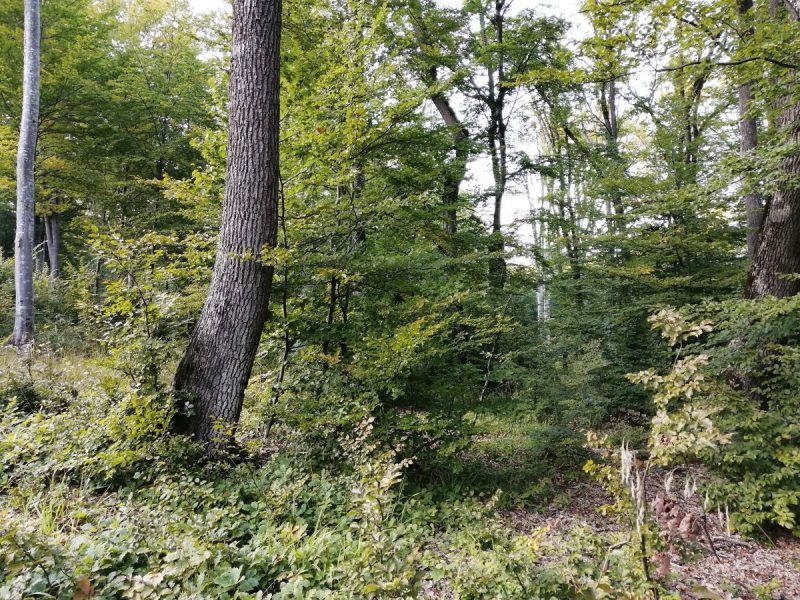Growth and development of trees and forest stands
Published on: February 10, 2022 Modified on: 27 April 2024

Growth means the irreversible increase in size, volume, and weight of trees and stands. The development of trees and stands refers to the qualitative properties that trees and stands undergo, properties that also depend largely on growth.
Growth and development of individual trees
Trees grow and develop from seed germination to physiological death. Like us humans, trees go through several development stages:
- the embryonic stage – from the formation of the zygote to the germination of the seed;
- the young stage – from the germination of the seed to the first abundant fruiting;
- the maturity stage – from the first abundant fruiting to the beginning of the physiological decline;
- the stage of old age – from the beginning of the physiological decline to physiological death.




Growth and development of forest stands
The forest stand is defined as the totality of trees growing together, or the homogeneous portion of forest for which specific silvicultural interventions are established and carried out. The growth and development of trees in a stand are different from the development of the individual, isolated trees. Growth space is limited both in the canopy and at the level of the roots. Competition for light, water, and nutrients are intense. As a result of competition, trees are slender (taller and thinner than those grown singly). Natural pruning starts at younger ages. Depending on the age of the stands, different stages and phases of development are differentiated, as follows.
In regular stands
Regular stands are characterized by the approximately equal age of the trees. From the time of germination or planting (thousands or millions of saplings or seedlings per hectare) to the physiological death of the trees (several hundred trees per hectare), three phases of development have been established:
- Youth phase: from the establishment of the stand to the first abundant fruiting. Includes 5 stages of development:
- the seedling stage – from the establishment of the seedlings until the crowns of seedlings merge together (closure of canopy);
- the sapling stage – from the canopy closure until the onset of natural pruning;
- the thicket stage – from the onset of natural pruning until the mean breast height diameter is approx. 5 cm;
- young pole stage – average diameter between 6 and 10 cm
- pole stage – average diameter between 11 and 20 cm (or until the first abundant fruiting).
- Maturity phase: from the first abundant fruiting to physical exploitability (first symptoms of physiological decline). Includes 2 stages of development:
- young-high forest stage – starting from the first abundant fruiting, i.e. with an average diameter of the stand between 21 and 35 cm;
- high forest stage – average diameter between 36 and 50 cm, i.e. until physiological decline.
- Old high forest phase: from the first symptoms of physiological decline, to the drying out of the entire stand. Includes the old growth stage.
In irregular stands
Irregular stands (uneven-aged stands) are characterized by the existence of individual trees of different ages within the stand. Thus, trees are in different stages and phases of development, and all development stages are present in the stand at the same time.



In virgin forests
In virgin forests (primary forests, old-growth stands), a complete growth cycle can take around 300 years or more. The development phases coexist within the virgin stands, coming together to form a mosaic.
Assisting the growth and development of trees and stands
The growth and development of stands can be stimulated by silvicultural interventions (providing the necessary growing space to the future crop trees by removing low-value specimens). The growth and development of individual trees can be encouraged by applying organic or chemical fertilizers, depending on the requirements of the species and the existing soil conditions. These can also be applied to stands by aerial spraying, using small planes or helicopters.
Recommended products
-
You can find products on a different store
Change Store -
You can find products on a different store
Change Store -
You can find products on a different store
Change Store -
You can find products on a different store
Change Store -
You can find products on a different store
Change Store -
You can find products on a different store
Change Store -
You can find products on a different store
Change Store -
You can find products on a different store
Change Store -
You can find products on a different store
Change Store -
You can find products on a different store
Change Store -
You can find products on a different store
Change Store -
You can find products on a different store
Change Store -
You can find products on a different store
Change Store -
You can find products on a different store
Change Store -
You can find products on a different store
Change Store -
You can find products on a different store
Change Store -
You can find products on a different store
Change Store -
You can find products on a different store
Change Store -
You can find products on a different store
Change Store -
You can find products on a different store
Change Store -
You can find products on a different store
Change Store -
You can find products on a different store
Change Store -
You can find products on a different store
Change Store -
You can find products on a different store
Change Store
















































































































































































































































































































































































































































